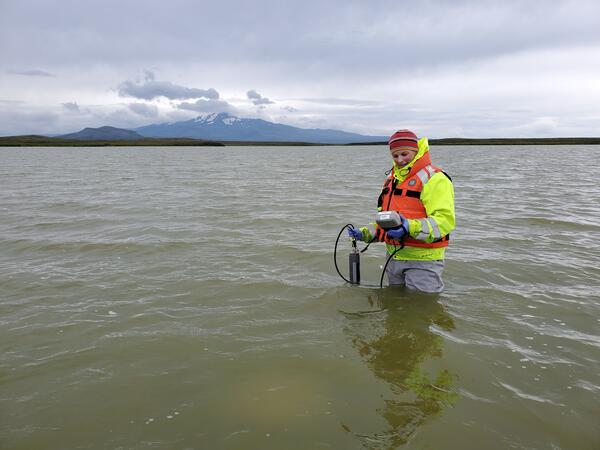Hydrologist takes water chemistry measures on the Alaska Peninsula
Hydrologist takes water chemistry measures on the Alaska PeninsulaLaura Hubbard of the USGS Upper Midwest Water Science Center takes water chemistry measures on the Alaska Peninsula as part of research to understand how long influenza viruses remain viable in the environment.








